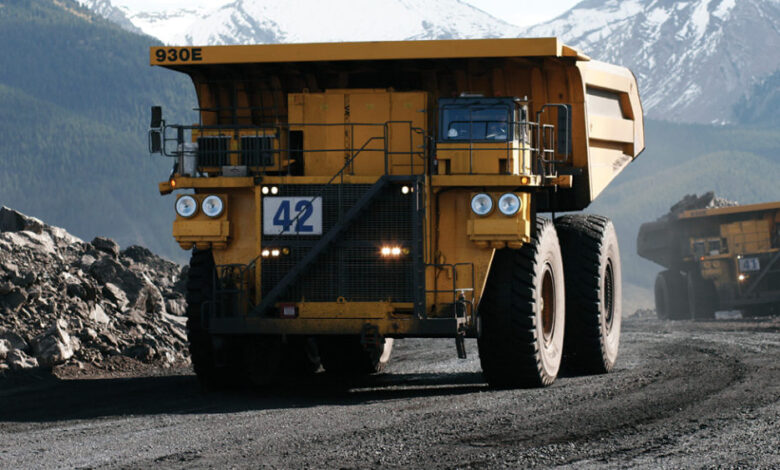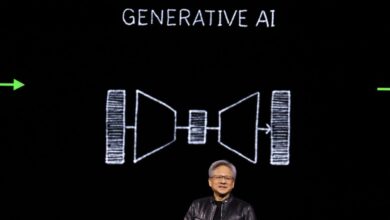Autonomous tire inspections and artificial intelligence can improve safety, uptime, and compliance

The purpose of regular truck inspections in mining operations is to ensure trucks are safe for people to continue operating them to the next planned service and to address any findings with the least amount of unplanned downtime. Manual inspections, however, can present safety and productivity challenges that Kal Tire’s mining tire group was committed to solving. The result was TireSight, Kal Tire’s approach to autonomous tire inspections.
What is the difference between traditional manual inspections and the future of automated inspections?
Traditionally, manual tire inspections on mine sites take place perhaps every seven or 20 days. Once the earthmover vehicle comes to a stop and is locked out, the technician walks around it, looking at the ultra-class tires. Since the tires can span heights of nearly 4.3 metres, the technician can only inspect what he can see, about 50% of the tire.
“A human can only document findings for what they can observe when the truck is parked,” says Christian Erdelyi, manager, mining technology solutions, Kal Tire’s mining tire group. “The next time they might have a chance to see the other 50% of the tire could be in seven days, at the next random inspection, or when the truck comes in for tire work in 25 days,” added Erdelyi.
Manual inspections can be both incomplete and infrequent — an issue exacerbated by industry-wide staffing shortages — and inconsistent. The priority or severity of the observation, and the recommended follow-up action, can vary widely. To a junior technician, what appears to be a serious condition requiring a stoppage could be a minor issue that an experienced technician would mark down to be addressed at the next scheduled maintenance.
For example, cut separations are a common sight on mining tires. To the untrained eye, a cut separation could look very concerning, but a more experienced technician would know those are not reparable, and we typically keep them running as long as it is safe to do so.
Mechanical separations — also known as “sealed separations” between the belt and tread, inside the rubber — can cause a range of findings and recommended actions.
Those are hidden from the human eye. Telltale signs do exist, but if you overlook them, it could lead to catastrophic tire failure and pose a risk to humans on site. If we over-prioritize a condition, there is unplanned downtime. If we overlook or under-prioritize a condition, it could turn out to be critical.
Now, beyond the subjective nature of manual inspection findings is the potential time lag between notes being compiled and recommended action being taken. Sometimes, the journey of that piece of paper can take several days, making it challenging to ensure tasks like repairs are carried out when required.
What could happen during that gap of time?
“We now have the data to show that tire damage can progress far quicker than we used to think possible: from a manual inspection finding that a tire appears visibly safe to operate one day to there being a serious problem that needs a stoppage just a few days later,” says Erdelyi.
Lastly, mines are becoming increasingly autonomous and increasingly restricted to humans, making traditional manual inspections even more challenging.
Sites with autonomous vehicles often require any vendor vehicles entering restricted autonomous zones to be escorted by site vehicles outfitted with specialized equipment. Technicians undergo additional training to understand the signals and operation of machines driven autonomously, and people must carry emergency beacons. If a technician were to bend over to pick up a tool and accidentally activate the beacon, all autonomously operated vehicles within a certain radius would immediately stop, interrupting fleet productivity and requiring human intervention to restart vehicles. The more people there are in these zones, the more cautious we must be and the more chance there is for disturbance to productivity.
As the mining world began to shift toward autonomously driven vehicles several years ago, Kal Tire wondered, how could inspections complement a more autonomous operation and reduce risk for technicians — while also improving compliance frequency, findings consistency, and timely follow-up work?
Those questions led Kal Tire to integrate the thermal imaging camera and artificial intelligence (AI) software of Pitcrew.ai with Kal Tire’s proprietary tire and operations management system (TOMS), to offer TireSight: autonomous inspections that flag signs of potential tire damage in real time and inspire action.
Today, at a copper mine in Chile, the 198 tires of 33 haul trucks pass by a thermal imaging camera set up near a haul road fuel bullet. Without even needing to stop, images of front and rear tires are captured, and the Pitcrew.ai software scans the thermal imaging footage for anomalies such as hot spots and tread damage. Inspection anomalies are processed in TOMS and an off-site condition monitoring team confirms critical next steps. Now, depending on a customer’s goals, work orders are automatically released to plan and schedule tire work, such as tire replacements or repairs, at times when trucks might already be down for other work.
“What we are doing is summarizing everything, taking out the noise and condensing things down to the items that really require action. This allows our inspectors on site to focus their attention on tire issues that need their expertise, rather than inspecting every tire every week just because it is on a schedule. And we ensure critical items are added to the maintenance plan, so they are addressed proactively,” says Erdelyi.
How Kal Tire’s TireSight addresses some of the challenges of traditional manual inspections
At several mines already in Canada, Chile, and Colombia where TireSight is already in use, the frequency of autonomous inspections ranges from every 15 minutes to every six hours. Increased inspection frequency identifies potential issues earlier and allows for more proactive maintenance, which leads to better operational uptime.
For a tire progressing quickly from a normal to a critical condition, thanks to TireSight, we can scan that tire multiple times. If a mine site’s tires are more prone to rapid mechanical separation, the ability to see trucks more often, and talk to customers to determine the right frequency of scans, is very powerful in ensuring we identify issues proactively and can track issues as they develop.
Where technicians can only manually inspect about half of the tire, a truck passing by the TireSight station will give cameras between three and five full rotations of each tire, ensuring every area of the tire is inspected at every passing.
In addition to increased tire coverage area, inspection findings and recommended follow-up actions are consistent because standard “business rules” are used.
Equally important are consistent parameters and protocols for recommendation actions, such as how long to isolate a truck because a hot tire event, or the guidelines and timelines for reparable and non-reparable findings. When is a repair economical? When is the most convenient time for that work? If the condition is beyond repair and it is an aging tire, what are the removal parameters when it is no longer safe for use?
A Kal Tire reliability analyst supports those early conversations and questions with customers, while the condition monitoring team ensures priority work is addressed.
“We are working one-on-one with the customer to figure out which problems the customer wants to solve most, and develop rules and approaches to solving those problems, whether the priority is tire performance or fleet productivity,” says Erdelyi.
With TOMS as one of the data streams that feed into TireSight, customers have extended insight into how planned and aggregated tire work can increase truck availability.
Now we can take that data and the inputs we have from Pitcrew.ai to make important decisions about fleet use based on what is happening on that mine site. We want to manage the life cycle of the tire to its safe end of service life — and we can do that more effectively because we have the data, and we have this co-operation between our condition monitoring team, our reliability analyst, and our customer. We can use the info to create the most efficient plan and then put the plan into action.
With several years of TOMS capturing tire management data from nearly 150 mine sites served by Kal Tire across five continents, aggregated data allows teams to benchmark tire performance, downtime, haul fleet productivity, and more. Now, along with Pitcrew.ai data insights, it allows the study of the progression of damage on tires. Over time, we may be able to tell from initial inspection, how many days of safe, useful life a tire has left and bring that into our planning.
The ultimate goal of TireSight is to help operators achieve their goals. Our focus is to keep trucks running safely and productively, minimizing downtime while also getting the most tire performance out of their tires.
By Kal Tire’s mining tire group
Source



